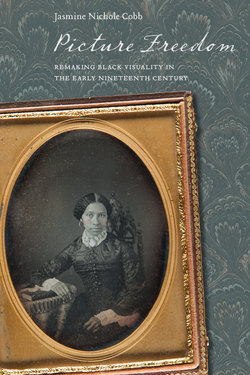Picture Freedom

Реклама. ООО «ЛитРес», ИНН: 7719571260.
Оглавление
Jasmine Nichole Cobb. Picture Freedom
Отрывок из книги
America and the Long 19th Century
General Editors
.....
Picture Freedom: Remaking Black Visuality in the Early Nineteenth CenturyJasmine Nichole Cobb
I offer the transatlantic parlor as “one single, complex unit of analysis,” much like the ships that Paul Gilroy uses to discuss slavery and its reverberations in a transnational and intercultural perspective.60 Similar to the “living means” by which Gilroy imagines the enjoining of disparate points across the Atlantic Ocean, I use the transatlantic parlor to emphasize the issues of display and spatial belonging that influenced interpretations of emancipation.61 While the figurative slave ship traveled the sea to create a sense of transient nationalism for people of African descent, the parlor represents the space where Whites and Blacks retired to reconcile that aftermath. Rather than the mobility symbolized in the slave ship, the parlor provided a rigid setting for disciplining Black freedom into belonging through visual practices. A transatlantic parlor made more luxurious because of the sailing ships that Gilroy describes, rife with more opulence and decoration through capitalistic exploitation, also represents a place where Whites and Blacks collectively experimented with the free Black body and visions of national inclusion. I reimagine the stagnant (but not static) parlor, overrun with the items picturing Others, to discuss the transformational notions about Black belonging. Picturing freedom functioned as a method to assuage anxieties about Blackness and its place within the transatlantic. The parlor—a very dark, heavy, and overly ornamental domestic space, often overrun with tokens of exoticism—was itself tied to slavery in that the refined home dwelling was meant to counter everything happening outside of the space. The parlor protected its inhabitants from the chaos of the exterior world, including colonial expansion, and thus becomes particularly important as a space for thinking about how viewers staged early notions of Black freedom as at home within the empire.
.....